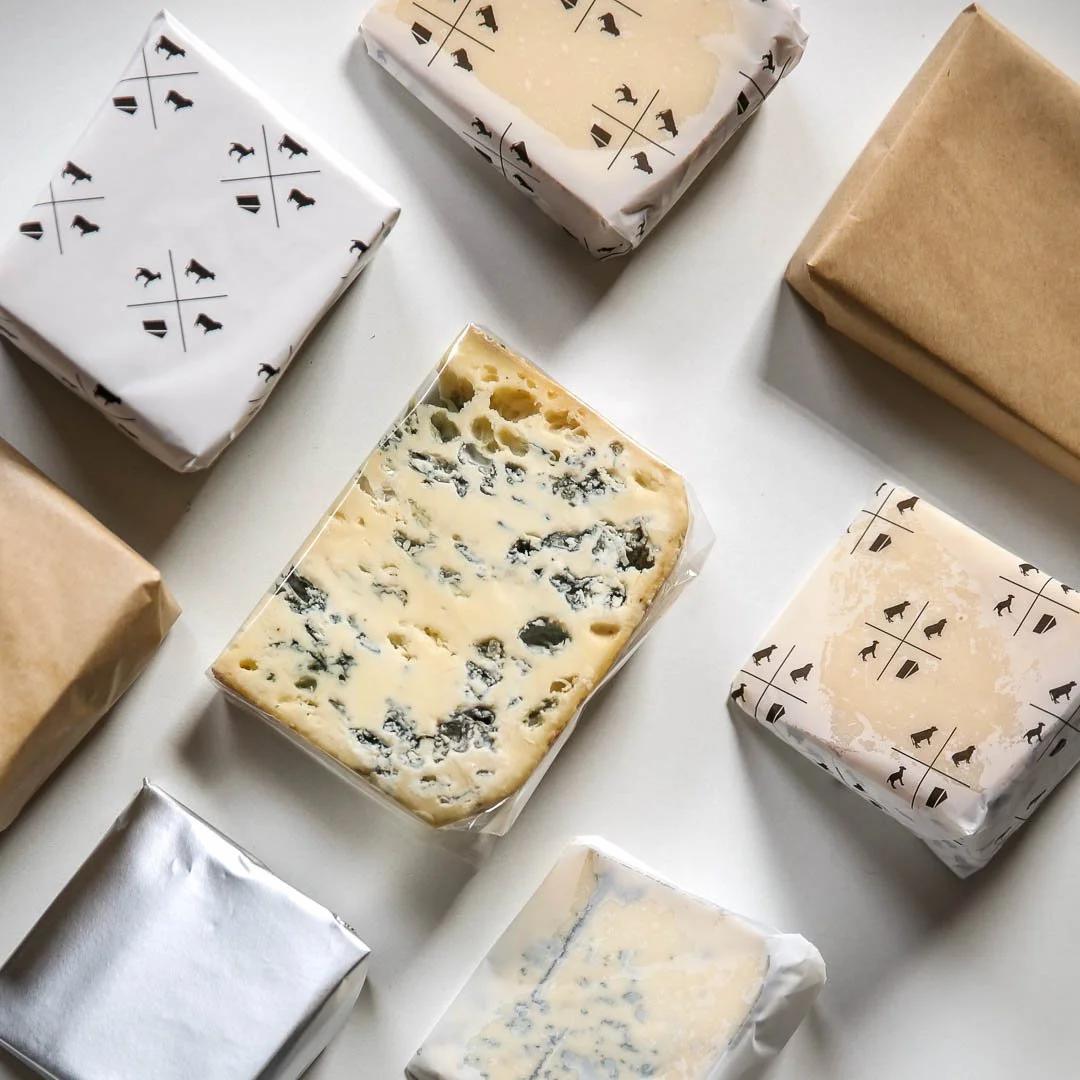I’m not the cheese police, but sometimes people do things to my favorite food group that make me cringe. All misdemeanors, not felony offenses, but still. We’d all get more pleasure from the cheese we purchase, and a longer life from it, if we treat it nicely. At the risk of sounding like a crank, I’m sharing a few of the most common crimes committed against cheese. These sins deserve, at the least, a rap on the knuckles with a limp baguette.
Don’t serve cheese cold. You know this. Cheese aromas blossom at room temperature and the texture softens, just as butter does. It takes only an hour to bring a 1-pound wedge to room temperature, less for a smaller piece. When you take the cheese out of the fridge, take it out of its wrapper, put it on a platter and cover it with a dome or an overturned bowl so it doesn’t dry out as it warms.
Don’t let cheese get too warm. See Exhibit A above. I let these beautiful cheeses swelter in my car on a hot day. Here’s what the cheese on the right should look like. Treat cheese like fish. If you’re shopping when it’s warm and not going straight home, take a cooler.
Don’t freeze cheese. When you freeze cheese, internal ice crystals form. When the cheese thaws, those crystals release water, ruining the texture. Thawed cheese is likely to be mealy or crumbly and won’t melt as well (if you intend to cook with it). Freezing also inactivates the microorganisms that ripen cheese, and they don’t spring to life later. If you bought too much Brie for your party, give the extra away. That said, when I spotted an amazing price on some Pecorino Romano at Costco, I bought a boatload and vacuum-sealed what I couldn’t use over the next few weeks. Vacuum sealing is a decent way to store hard cheeses that you’ve bought a lot of, such as aged Cheddar or Parmigiano Reggiano. Soft and semi-soft cheeses don’t appreciate being vacuum sealed ever.
Wrap it up: coated cheese paper
Please don’t store cheese in plastic wrap. Yes, you bought it that way. Cheese shops use plastic film because they must, so you can see what you’re buying. But they typically turn the cheese over quickly, and when you get it home you’re going to rewrap it. Take it out of the plastic and rewrap with wax paper or cheese paper (many stores sell it), then put it into a lidded container. If you’re going to serve the cheese right away, gently scrape the cut surface with a knife to remove any staleness or taste of the plastic. Scraping reveals a fresh, aromatic layer underneath—sort of like having a fresh pour of wine in your glass.
Don’t remove the rind. Rinds are part of the beauty of many cheeses, and cheesemakers work hard to perfect them. For some cheeses, that’s where most of the effort goes. Let your guests trim away a rind if they choose but you should present the cheese with the rind intact.
Don’t forget to store that feta in brine. A lot of stores take feta out of its brine, cut it down into grab-and-go blocks, wrap the blocks in plastic and toss the brine. If you want that feta to live for a while, you need to replace the brine. Use a 5% salt solution (about 2-1/2 tablespoons kosher or sea salt dissolved in 1 quart cool water). Be sure to use tongs or a fork to retrieve chunks of feta so you keep your fingers out of the brine.


